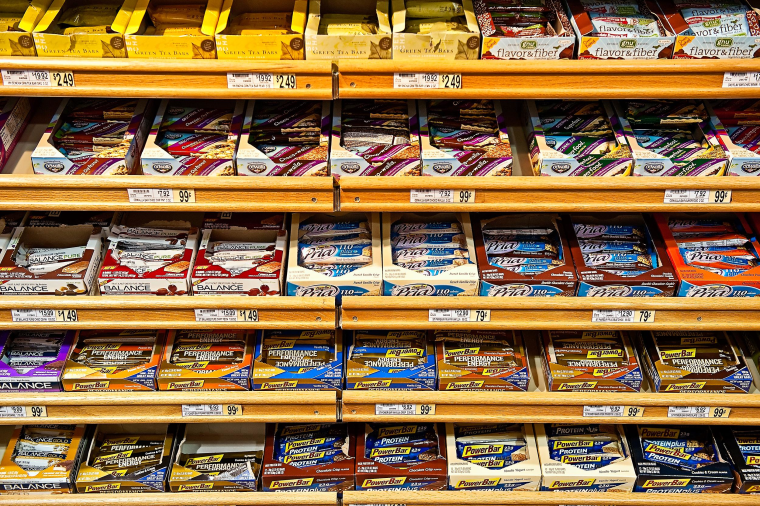American workers are more productive than ever, increasingly fueled by snack bars they can gulp on the go.
Sales have skyrocketed, and experts say it's a combination of our penchant for multi-tasking, the rise in "grazing" instead of eating full meals, a desire for convenience and a perception that bars are a healthy substitute for candy or other snack food.
“Bars fit into that hectic lifestyle consumers are facing these days,” said Darren Seifer, food and beverage industry analyst at the NPD Group. “When they’re typing at their desk or commuting to work and they have only one free hand, it certainly helps out with their rushed and hurried lifestyles.”
Snack bars are “becoming more and more important because people are snacking more .... I think the definition of meals has changed,” said Phil Lempert, CEO of the website SupermarketGuru.com. “If I look at the average single professional, they could be having a bar for breakfast in the morning,” he said, followed by more bars for morning or afternoon snacks.
Melanie Wrzesinski is a typical example. “I have two a day, usually,” the 30-year-old Greenville, S.C., resident said. Wrzesinski eats five small meals a day and finds bars easier to fit into her busy schedule working with brain-injury patients at a hospital, she said. “I keep some in my desk drawer at work so I don’t have to bring them every day.”
She has plenty of company. In a typical two-week period, almost a quarter of Americans eat some type of snack bar at home or bring one from home to eat later, according to NPD, a figure that’s jumped almost 10 percentage points in a decade.
Americans are also grabbing snack bars when they’re already on the go. Year-over-year, NPD found that the unit and dollar volume of snack bar sales to foodservice establishments — cafeterias, hotels, restaurants and the like — have grown by 13 percent and 15 percent, respectively.
“When they’re typing at their desk or commuting to work and they have only one free hand, it certainly helps out with their rushed and hurried lifestyles.”
Busy American worker bees are sacrificing breakfast, lunch and coffee breaks on the altar of productivity, and increasingly rely on snack bars to power them through their days.
According to data released earlier this month by the Bureau of Labor Statistics, worker productivity grew in the fourth quarter of 2013 at an annualized rate of 3.2 percent, propelled by a 4.9 percent increase in worker output and a 1.7 percent increase in hours worked.
In a 2012 online poll, ManpowerGroup division Right Management found that less than 20 percent of workers say they regularly take lunch breaks. About 40 percent of workers said they eat at their desks, and 28 percent say they infrequently or never take lunch breaks.
“We started to see this kind of behavior, in particular, when we had the recession, and people never really got out of it,” said Margaret-Ann Cole, senior vice president with Right Management. “It’s an example of the relentless stress workers are experiencing. It becomes the new normal.”
Snack bars are a convenient solution for some. “You just unwrap them and they’re ready to go,” Wrzesinski said. “You also don’t need to carve out half an hour to eat it.”
With that kind of workplace dynamic, it’s no wonder the popularity of bars has soared, said Beth Bloom, food analyst at Mintel. “Busy, on-the-go lifestyles definitely support growth in the category,” she said via email. “These items are easy to grab and go.”
And while Americans are working harder than ever, they expect their food to do the same. “Consumers gravitate to foods that have a health halo and could provide you with a benefit just by eating it,” the NPD Group’s Seifer said. “Why they’re choosing to have bars … has a lot to do with health.”
Seifer said people are looking for quick, convenient food that’s low in calories or high in fiber or protein. About half of Americans say they’re trying to add more protein to their diet, and manufacturers are responding. Last year, 18 percent of bars carried a “high protein" claim, up from slightly less than 13 percent in 2009, Bloom said.
“What we’re seeing with a lot of these bars is it’s either for protein or energy,” Lempert said. “It’s a handy way to get both nutrition and satisfaction.” Now that we’re using bars as a stopgap for meals or meal replacements, “We’re looking for more than just taste and sugar,” he said.
